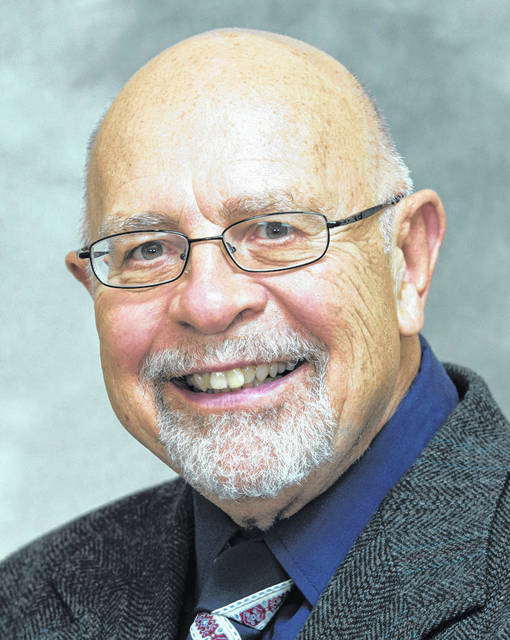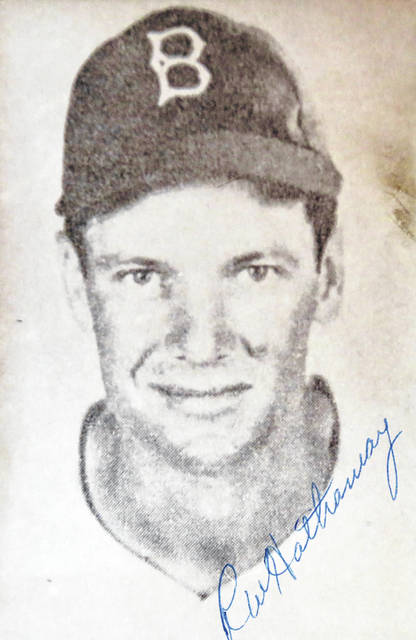

I got an opportunity to play two minor league baseball games in 1982.
No, it wasn’t some fantasy baseball gig.
It was at spring training for the Montreal Expos on a magazine assignment.
I played first base for manager Felipe Alou, my boyhood hero when he and his two brothers shared outfield duties for San Francisco, and batted in the same lineup with future star Terry Francona.
I’ve never forgotten the thrill.
Which is why I know that Greenville’s hometown hero Ray Hathaway enjoyed his brief season in the sun for the Brooklyn Dodgers as a right-handed pitcher.
The year was 1945.
Ray had mustered out of the 6th U.S. Naval Mobile Construction Battalion (Seabees). He served with honor fighting the Japanese in World War II. He earned a Bronze Star for bravery at Guadacanal as he helped keep an airfield running.
Prior to serving he had been highly regarded by baseball scouts who came to see him pitch for the Greenville Merchants and various church league teams. He also played well for the minor league Santa Barbara Saints before reporting for duty. His record that year was 13-9 with a 2.84 earned run average.
The 1945 Dodgers had some roster names every committed fan would remember.
There was 19-year-old Ralph Branca. He played 12 seasons but trivia buffs remember him giving up a game-winning homerun to Bobby Thomson of the New York Giants to cost the Dodgers the 1951 pennant.
There was Eddie Stanky, who set a record, since broken, for drawing the most walks in a season with 148 bases on balls.
And there was Mickey Owen, a defensive genius at catcher, trying that year to live down a crucial dropped third strike in the 1941 World Series that gave the win to the New York Yankees.
“Dem Bums” manager Leo Durocher played Ray sparingly in 1945.
He pitched one inning in relief, giving up one homerun but getting slugger Mel Ott out, as the Giants beat Brooklyn.
He then pitched an exhibition game against a semipro team from Long Island on April 30. In one memorable inning, he struck out four men. One of those he struck out got on base when the catcher let a third strike roll behind him.
On May 28, Durocher started Ray. But control problems led him to put runners on base. He pitched only five innings in a 5-3 loss. And that was his ’45 season except for one last spot relief appearance.
He was sent down to the Montreal Royals farm club in ’45 and went 10-8. He experienced some arm pain and was demoted to Class C in 1946.
Jackie Robinson was his teammate in Montreal. “Hit, run, steal — he did it all,” Ray once said.
Married to the former Mary Helen Ditmer of Darke County, and with a sickly newborn destined, sadly, to die that year, Ray in 1947 asked the Dodgers for a chance to manage in the minor leagues.
The legendary Branch Rickey, the Dodgers sports executive who gave Jackie Robinson his big deserved chance to play, took a long pause and then said yes.
He went back to the Santa Barbara Saints as a player-manager. He continued to pitch in the minors until he was 48.
It was as a manager that Ray found his niche. His various minor league teams won 1,441 games.
He was a witty gentleman but competitive. His fiery attitude got him thrown out of several games. On one occasion, he argued in the ninth-inning that a called ball had been a strike. He added a little drama by sailing his ballcap into the stands.
“The ball was outside and that goes for you, too,” the umpire roared as he ejected Ray.
His greatest seasons were seven successful years managing the Asheville Tourists. He was rewarded with election to the South Atlantic League Hall of Fame.
One year he managed Knoxville and played a black third baseman even when fans booed mercilessly. “I wanted to win, and he was the best third baseman I had,” Ray told a writer.
Future major leaguers Dick Williams and Willie Stargell played for him. So did Bill Sharman who gained his fame as Bob Cousy’s back-court partner for the Boston Celtics of the National Basketball Association.
And it was in Asheville, N.C. where he and Helen found a happy retirement.
She died in 2002 at 83.
Ray died at age 98 on February 11, 2015. He was the second oldest living player, surpassed only by a few months by former Brooklyn teammate Mike Sandlock.
Just before Ray died, a sportswriter visited him and remarked that a ball he signed had sold for $300. “Send me a ball, I’ll sign it for nothing,” Ray said, chuckling.






